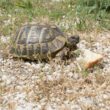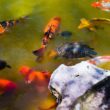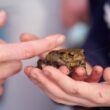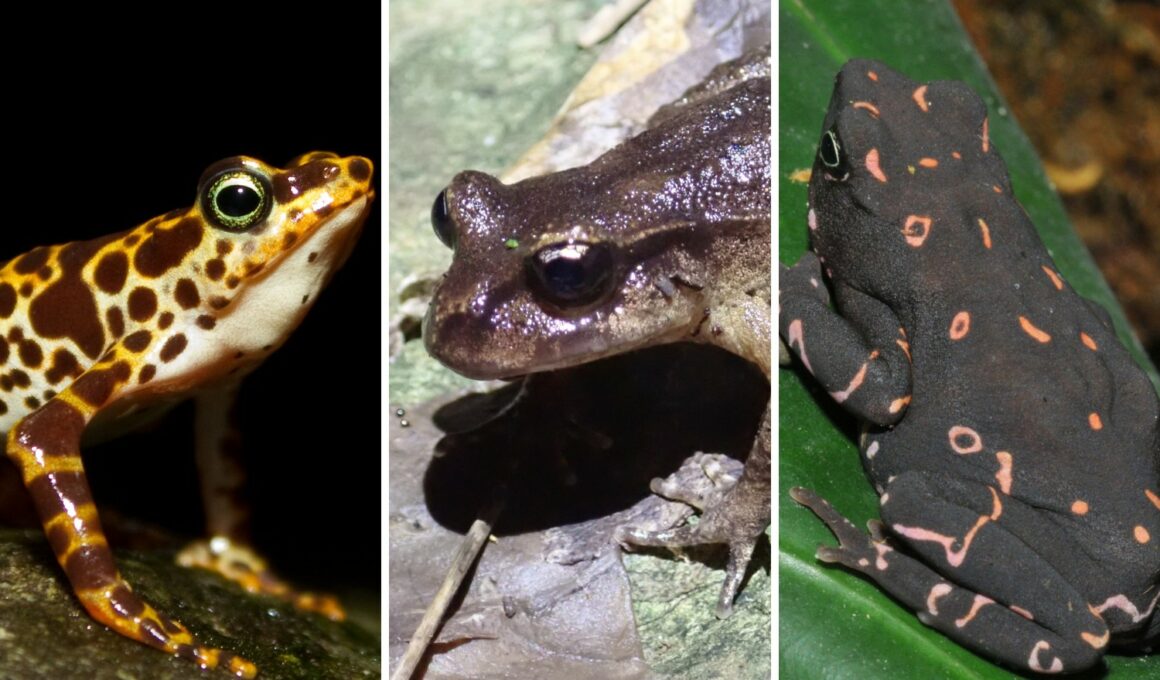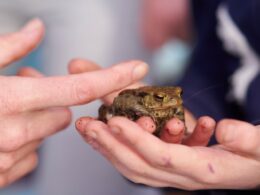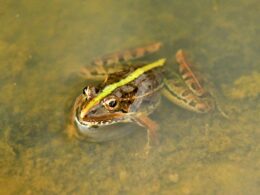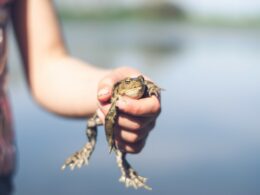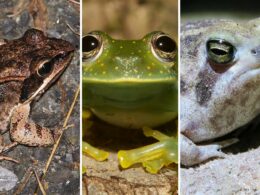In this article Show
Frogs have always held a special place in my heart. On lazy Sundays, when I’m not taking care of my pets or deep-diving into reptile reads, I often find myself mesmerized by these incredible amphibians.
It’s not just their vibrant colors or quirky behaviors that captivate me but also their irreplaceable role in our planet’s ecosystems.
Think of them as nature’s little barometers. Frogs are sensitive to changes in their environment, making them crucial indicators of the health of our ecosystems. When frog populations dwindle or certain species become rare, it’s a sign that something’s amiss. Sadly, many of these little guys face threats pushing them to the brink of extinction.
But why does this matter? Well, apart from the sheer wonder of these unique creatures, they play essential roles in our environment, from controlling pest populations to being a food source for larger animals. Their decline can set off a domino effect that impacts various other species.
In this guide, we’ll journey together through the eight of the world’s rarest frogs. Some of these names might be new to you, while others may have crossed your path in previous readings. Either way, I promise this will be a fascinating leap into the world of these incredible amphibians.
Why Are These Frogs So Rare?
As a reptile enthusiast, one question often plagues my mind: Why are so many of our world’s fascinating frog species teetering on the edge of extinction? The reasons are multifaceted and often interconnected. Let’s break it down.
1. Habitat Loss and Deforestation
Imagine you come home one day, and your house is suddenly half its original size. Sounds terrifying, right? This is the reality for many frog species. As forests get cleared for agriculture, urban development, or logging, these amphibians lose their homes.
Not just that, they lose their food sources, breeding grounds, and shelter from predators. It’s like pulling the rug out from under them – and it happens at an alarming rate.
2. Climate Change Implications
Temperature and moisture are crucial for frogs. Many species have evolved to thrive in specific climates. As global temperatures rise, and rainfall patterns shift, these conditions change.
Frogs, being ectothermic (they rely on external sources to regulate their body temperature), find it challenging to adapt quickly to these changes, leading to significant population declines.
3. Diseases, Especially the Chytrid Fungus
Diseases have always been a natural part of ecosystems, but the chytrid fungus is a nightmare for frogs. This fungus attacks their skin, which is vital for their respiration and hydration. As the disease spreads, many species have experienced rapid declines, some even becoming extinct within a few years of the outbreak.
4. Introduction of Invasive Species
When new species are introduced to a frog’s natural habitat, they often don’t have natural predators to keep them in check. These invasive species can outcompete native frogs for food, introduce new diseases, or even prey on them directly. It’s like adding a wild card to an already delicate balance.
5. Over-collection for the Pet Trade
Being a pet owner, I understand the allure of wanting a unique and beautiful creature to care for. However, the demand for rare frogs in the pet trade often leads to over-collection from the wild.
While some might argue that captive breeding can offset this, the reality is that many of these frogs are taken before they can reproduce in the wild, depleting already fragile populations.
The cumulative effect of these threats is a world where our beloved frogs are in grave danger. And the repercussions of their decline ripple throughout ecosystems, affecting other species and even us humans. It’s a delicate web, and every strand counts.
The 8 Must-Know Rare Frog Species
1. Golden Toad (Incilius periglenes)
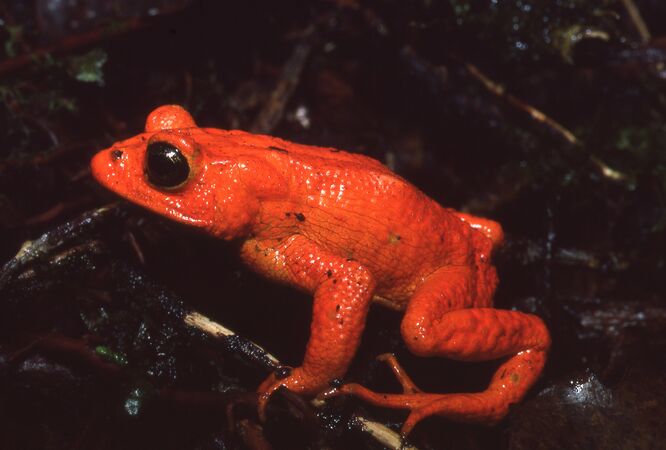
Habitat and Location
The Golden Toad was native to the high-altitude regions of the Monteverde Cloud Forest Reserve in Costa Rica. These toads preferred the misty, cloud-covered rainforests where they thrived in the cool, humid conditions.
Why It’s Rare
The Golden Toad’s rapid decline is a sad tale of a perfect storm of factors. Habitat loss due to deforestation played a part, but the most significant blow came from climate change.
Rising temperatures reduced the misty conditions they loved, leading to reduced moisture which they needed for breeding. Additionally, the chytrid fungus also took a toll on their numbers.
Current Conservation Status
Unfortunately, the Golden Toad is believed to be extinct. The last confirmed sighting was in 1989. Despite extensive searches and efforts to find them, none have been spotted since, making it a haunting symbol of amphibian decline worldwide.
2. Kakapo Frog (Leiopelma hamiltoni)
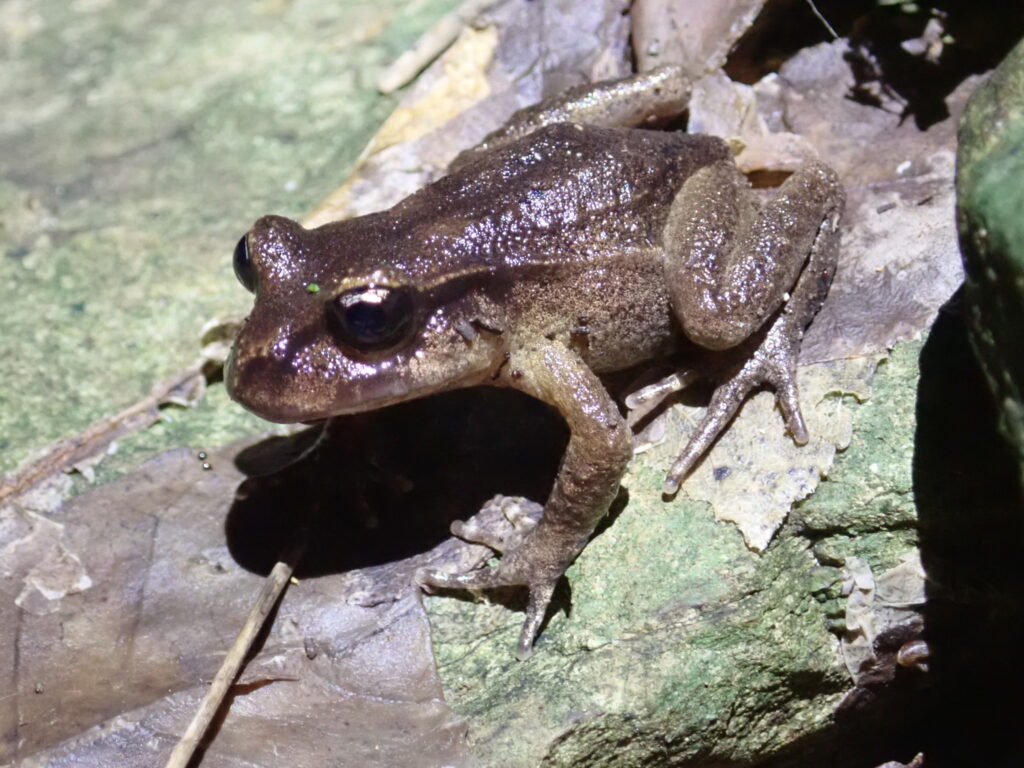
Habitat and Location
The Kakapo Frog, not to be confused with the Kakapo parrot of New Zealand, is also a New Zealand native. This frog can be found in the forested areas of the northern region of the country, particularly in moist and shaded habitats.
Why It’s Rare
Habitat destruction is the primary culprit for the Kakapo Frog’s decline. As forests were cleared for agriculture and development, these frogs lost their homes. Additionally, introduced predators, such as rats, have preyed on them, further depleting their numbers.
Current Conservation Status
The Kakapo Frog is currently listed as “Endangered.” Conservation efforts in New Zealand are in place to protect their remaining habitats and control invasive predators.
3. Table Mountain Ghost Frog (Heleophryne rosei)
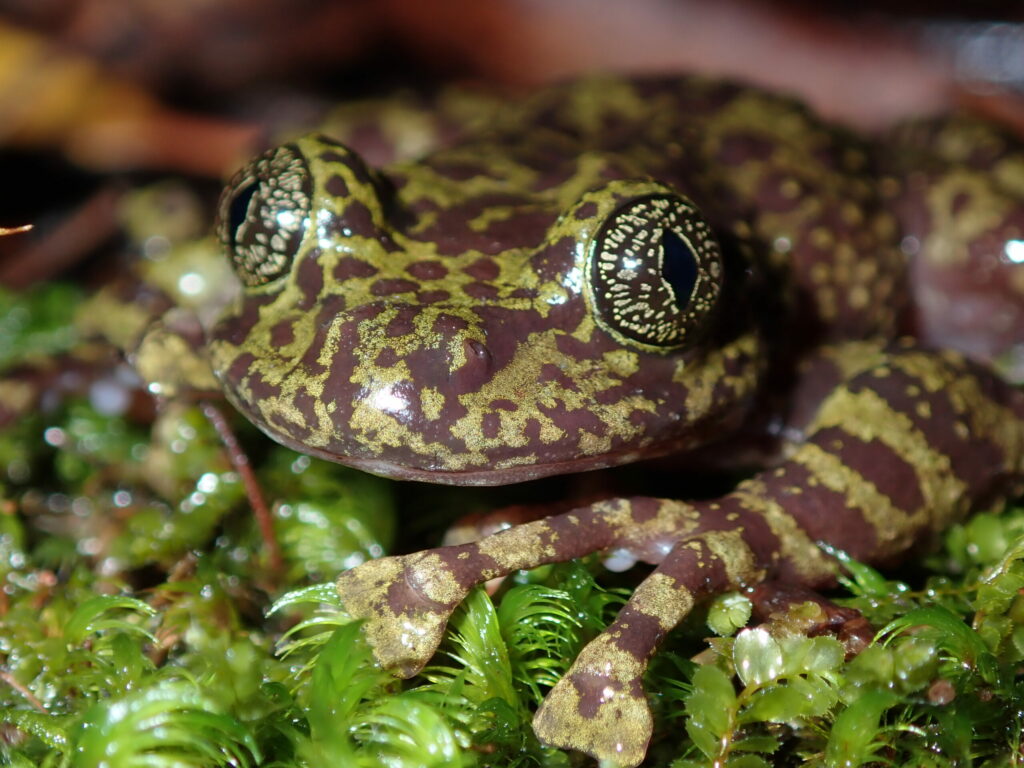
Habitat and Location
This unique frog is native to a very restricted range: the eastern slopes of Table Mountain in South Africa. They are usually found in clear, fast-flowing streams surrounded by indigenous forests.
Why It’s Rare
The main threats to the Table Mountain Ghost Frog include habitat destruction due to urban development and the spread of non-native vegetation which chokes out their natural habitat. Changes in the flow of streams, either from droughts or human intervention, have also affected their breeding grounds.
Current Conservation Status
The Table Mountain Ghost Frog is classified as “Critically Endangered.” Conservationists are working hard to manage and restore their natural habitats, remove invasive plant species, and raise awareness about their precarious status.
4. Arroyo Toad (Anaxyrus californicus)
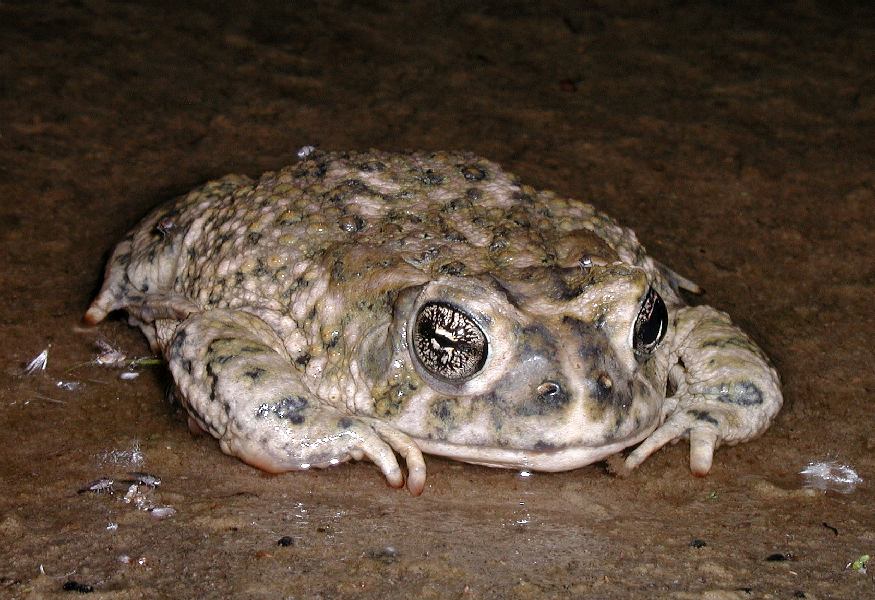
Habitat and Location
The Arroyo Toad is predominantly found in the coastal regions of southern California, USA, stretching a bit into Baja California, Mexico. It thrives in sandy habitats adjacent to rivers and streams, especially in areas with shallow, slow-moving water.
Why It’s Rare
Human activity is the primary concern for the Arroyo Toad. Urban development, agriculture, and road construction have led to significant habitat fragmentation and destruction. Additionally, invasive species like the American bullfrog pose a threat as they prey on the Arroyo Toad.
Current Conservation Status
The Arroyo Toad is classified as “Endangered.” Conservation efforts in southern California are ongoing, which include habitat restoration, monitoring of populations, and measures to reduce the impact of invasive species.
5. Corroboree Frog (Pseudophryne corroboree)
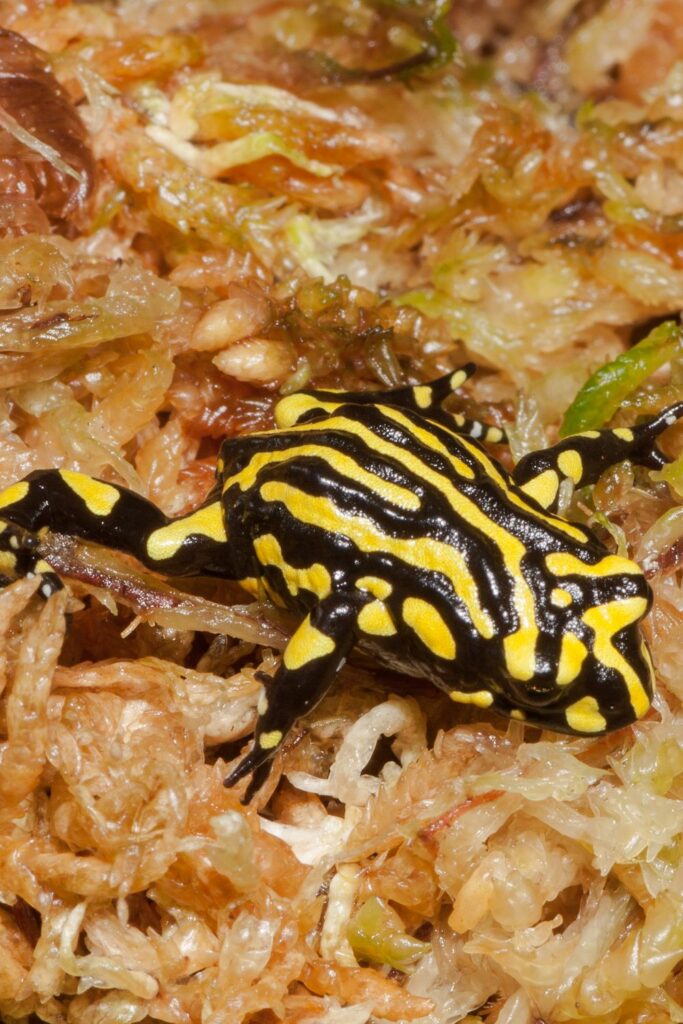
Habitat and Location
Endemic to Australia, the Corroboree Frog can be spotted in the sub-alpine regions of southeastern Australia, primarily in the Snowy Mountains of New South Wales. They favor boggy meadows and mossy areas.
Why It’s Rare
Two main culprits are to blame for the Corroboree Frog’s decline: chytrid fungus and habitat destruction. The deadly chytrid fungus has had a devastating impact on their populations, while land disturbances like livestock grazing, tourism, and road construction have further eroded their habitats.
Current Conservation Status
Listed as “Critically Endangered,” the Corroboree Frog is the focus of several conservation projects. Efforts include captive breeding programs and reintroduction into the wild, combined with measures to tackle the spread of chytrid fungus.
6. Purple Frog (Nasikabatrachus sahyadrensis)
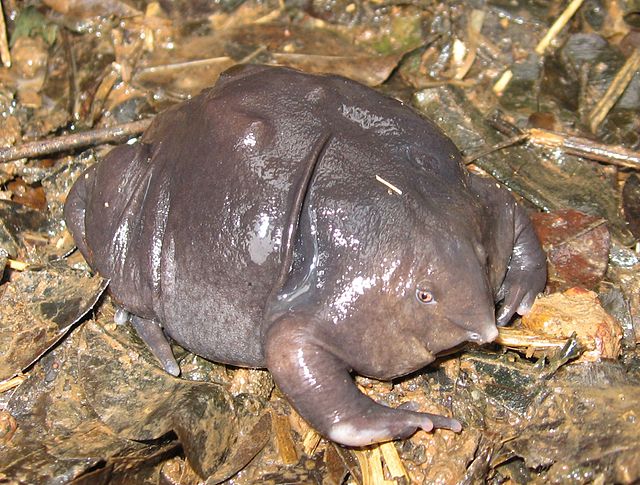
Habitat and Location
A wonder from India, the Purple Frog is native to the Western Ghats mountain range. This burrowing frog spends most of its life underground, surfacing only for a few days during the monsoon season to breed.
Why It’s Rare
Their specialized habitat has faced threats from deforestation and land conversion for agriculture. Additionally, their brief above-ground appearance during the breeding season makes them vulnerable to collection, either for the pet trade or local consumption.
Current Conservation Status
The Purple Frog is categorized as “Endangered.” Recognizing its unique evolutionary significance and the threats it faces, conservation initiatives are being undertaken in India to protect its habitat and raise awareness about its importance.
7. Pebas Stubfoot Toad (Atelopus spumarius)
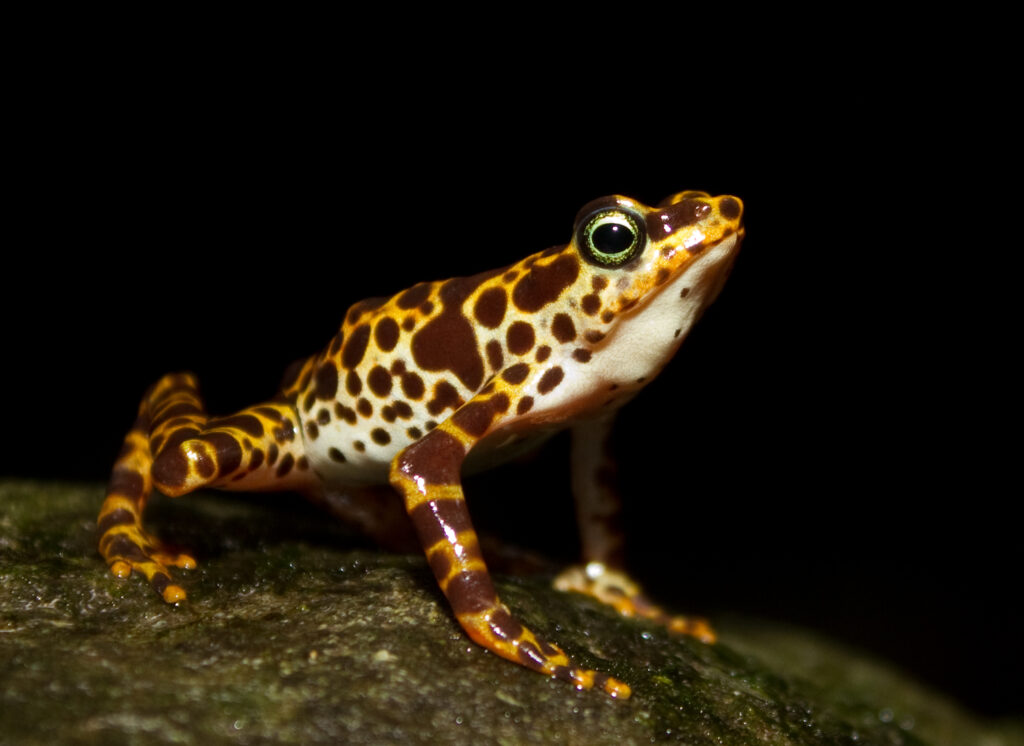
Habitat and Location
Native to the Amazon basin of Peru and Brazil, the Pebas Stubfoot Toad is found in tropical lowland forests. These toads prefer areas near slow-moving or stagnant water bodies, which serve as their breeding grounds.
Why It’s Rare
Multiple factors have contributed to the decline of the Pebas Stubfoot Toad. Deforestation and habitat alteration due to agriculture and logging activities have taken a toll. But perhaps more devastatingly, the chytrid fungus has swept through their populations, causing significant mortality.
Current Conservation Status
The Pebas Stubfoot Toad is classified as “Critically Endangered.” Conservation initiatives in the Amazon region are focusing on habitat protection and restoration, along with research to find solutions to the chytrid fungus epidemic.
Conservation Efforts & How to Help
1. Global and Local Initiatives
Conservation is a collective effort, often bridging the gap between international organizations and local communities. Globally, organizations like the International Union for Conservation of Nature (IUCN) and the Amphibian Survival Alliance are pooling resources and expertise to address the amphibian crisis.
Locally, grassroots movements and community-led projects play a crucial role, especially in areas of high biodiversity like the Amazon and Western Ghats. Local communities often serve as the first line of defense against habitat destruction and illegal collection.
2. Ways to Support Frog Conservation
Every individual can make a difference. Here are some actionable ways:
- Adopt Responsibly: If considering a frog as a pet, ensure it’s from a reputable breeder and not taken from the wild.
- Donate: Contributions to conservation-focused NGOs can significantly aid research, habitat restoration, and awareness campaigns.
- Educate and Advocate: Knowledge is power. The more people are aware of the amphibian crisis, the greater the collective effort to combat it. Share articles, host educational sessions, or simply discuss with friends and family.
- Support Sustainable Products: Choose products that are eco-friendly and promote sustainable farming and forestry, reducing the threat to frog habitats.
- Participate in Citizen Science: Many programs invite the public to monitor frog populations, record calls, or track sightings. It’s a fun and hands-on way to contribute!
The Role of Ecotourism and Responsible Wildlife Viewing
Ecotourism has emerged as a double-edged sword. On the one hand, it raises awareness and generates funds for conservation. On the other, if not managed properly, it can disturb fragile habitats. Here’s how to ensure your ecotourism experience is frog-friendly:
- Stay on Designated Paths: This minimizes the disturbance to habitats and reduces the risk of unknowingly stepping on amphibians.
- Maintain Distance: Observe frogs from a respectful distance. Remember, you’re in their home.
- Follow Guidelines: Whether it’s a national park or a local nature reserve, adhere to the rules. They’re there for a reason.
- Choose Ethical Tour Operators: Before booking, research to ensure the operator follows responsible wildlife viewing practices and contributes to local conservation efforts.
Frogs, with their delicate nature and intrinsic link to the environment, serve as a reminder of our planet’s fragility. Our choices, big or small, ripple through ecosystems. Let’s ensure they are ripples of positive change.

